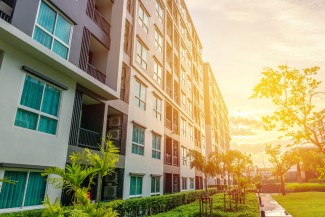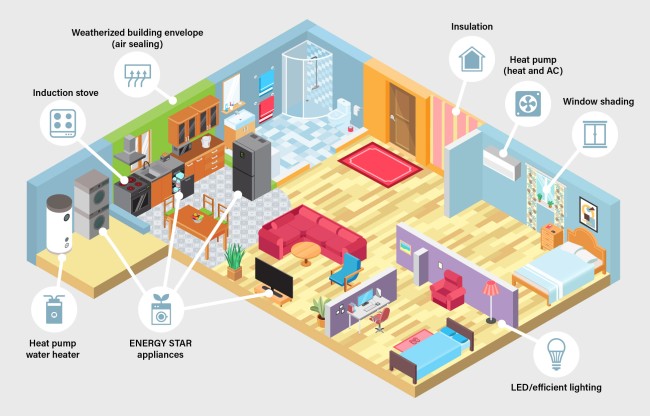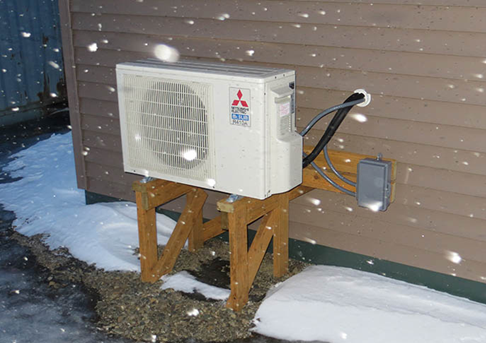The affordable housing sector stands to miss out on the many benefits of electrification and decarbonization, as few utility programs target its particular needs and challenges, according to a report released today by the American Council for an Energy-Efficient Economy (ACEEE).
The research shows that utilities are starting to support home electrification—essential for reducing climate-warming emissions—but still have few programs to help the affordable housing sector. Such existing programs tend to be single demonstration projects or pilot programs, not full-scale programs serving large customer populations. Electrification in homes involves replacing equipment that uses fossil fuels, such as natural gas, propane, or heating oil, with technologies that use electricity, preferably from renewable sources. For heating and hot water, this means heat pumps instead of fossil-fuel furnaces and water heaters. For cooking, this means induction stoves instead of gas ranges and ovens.
Two-pronged approach must include efficiency
Our report recommends a two-pronged approach to decarbonizing affordable housing: (1) improving the energy efficiency of the building shell, equipment, and systems, and (2) converting equipment from fossil fuel-dependent to electric (i.e., electrification). In cold climates, some use of fuels may be needed when temperatures get very low. Together these strategies can have the largest impact for reducing carbon emissions, particularly as utilities shift away from fossil fuel electric generation to renewable, no-carbon generation such as wind and solar.
Low- and moderate-income households stand to gain several benefits from electrification and improved energy efficiency, including lower monthly utility bills and energy burdens. Eliminating the combustion of fossil fuels yields health and safety benefits, especially for people with respiratory conditions. Installing heat pumps to replace existing heating equipment can also provide air-conditioning—a potentially life-saving upgrade for homes not already air-conditioned—as more regions face deadly heat waves, as in the Pacific Northwest in 2021. And should the power go out, a home that is well sealed and insulated will maintain habitable temperatures for longer during temperature extremes.
Barriers to decarbonization in older buildings
Decarbonizing affordable housing—largely defined as serving low- and moderate-income households—is challenging, particularly for existing buildings. Electrifying existing fossil fuel technologies, such as furnaces, boilers, or water heaters, can require costly upgrades and modifications, such as increasing electric wiring capacity. Electrification in new construction does not pose such barriers and is typically no more expensive than installing fossil-fuel equipment and systems. While the number of residential electrification programs is growing rapidly, few are designed for affordable housing.
Another barrier is unfamiliarity with electric technologies, such as heat pumps and induction stoves. This applies both to customers and contractors. In cold climates especially, customers may be unaware that heat pumps can indeed maintain comfortable indoor temperatures during extremely cold winter weather. Contractors may be unfamiliar with how to correctly size and maintain heat pumps. Therefore, market adoption has been slow, although today’s cold-climate heat pumps are capable of meeting heating demands in most regions.
Outdoor unit of a ductless cold climate air source heat pump in Dillingham, Alaska. Source: NREL.
Emerging policies and programs showing the way
A leading example of a statewide decarbonization program targeting multifamily properties with low-income residents is California’s Low-Income Weatherization Program (LIWP), one of the largest building electrification efforts in the United States. Since its beginning in 2016, LIWP has delivered more than $33 million in incentives based on avoided greenhouse gas emissions for more than 8,100 low-income rental households. Building retrofits include insulation; air and duct sealing; electrification of space heating, hot water, and cooking; and distributed energy resources including rooftop and community solar.
Some cities are taking similar actions but at a smaller scale. In 2021 the New York State Energy Research and Development Authority announced a forthcoming $24 million pilot program in partnership with the New York City Department of Housing Preservation and Development to fund electrification in affordable housing in New York City. This partnership aims to deliver all-electric retrofit upgrades to 1,200 units
At the utility level, the Sacramento Municipal Utility District (SMUD) plans to reach 100% carbon-free power by 2030. To that end, it offers several incentive programs and partnerships to help different segments of the affordable housing sector. SMUD’s Sustainable Communities initiative involves partnerships with key community groups like Habitat for Humanity, the Sacramento Housing & Redevelopment Agency, and the Mutual Housing Fund. By combining resources and adequately funding these initiatives, SMUD can effectively support electrification measures such as heat pumps, water heaters, and induction stoves for many low-income units in its service territory.
The federal government has long been a leader and major funder for energy efficiency programs serving low-income customers, largely through the Weatherization Assistance Program (WAP). In March of this year, the Biden administration announced $3.16 billion in newly available funding for home retrofits and electrification through WAP. As part of the infrastructure bill passed by Congress in 2021, this funding will enable WAP to retrofit about 450,000 homes to improve their energy efficiency and replace fossil-fuel equipment with electric alternatives.
Enabling all households to fight climate change and reap the rewards
Decarbonization initiatives should take advantage of multiple opportunities (city, state, federal, utility incentives, financing) to leverage available resources. Collaboration among the many affordable housing stakeholders is also critical to apply organizational knowledge, relationships, skills, and experience. Retrofitting for decarbonization is essential to meet climate targets and ensure that the benefits of decarbonization are shared by all customers.



